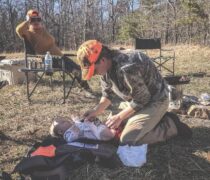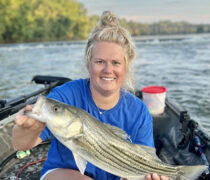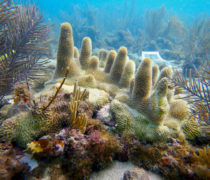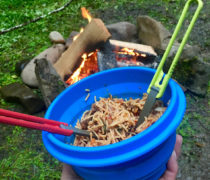Watershed Restoration Citizen Science Project

Artemis is really excited to get our boots on the ground and our waders in the water this summer by partnering with the Clark Fork Coalition, Montana Wildlife Federation, and NWF Northern Rockies and Prairieson a citizen science project. Based out of Missoula, MT, the citizen science effort will produce a field inventory of beaver sign in key watersheds on the Lolo National Forest, including Miller Creek, Lolo Creek and Fish Creek. We will walk along the riverside, pay attention to our surroundings, and note any beaver sign (probably taking note of beautiful runs to come back and fish later). The information we collect will enable better understanding and consideration of beaver – their role in shaping habitats and influencing ecosystem resiliency – in the management of watersheds in the Clark Fork basin. The data will allow management agencies to consider current and potential beaver influence on their lands and land management.
Register to be a citizen scientist here!
Why beavers matter to hunters and anglers!
Beavers are a keystone species. This means they modify their environment in a way that influences the whole ecosystem.
In the past decade, we have begun looking closely at how beaver activity impacts water storage, fish and wildlife habitat, and water quality. What we are seeing is that beavers may be our most important partner in protecting and restoring western streams and watersheds, changing everything from soil to vegetation to water quality to wildlife.

Beavers build temporary dams on small streams, which slows down rainwater runoff and snowmelt. This water is held at a higher point in the watershed. Over the summer, it seeps out slowly, replenishing groundwater and providing essential stream flows during the hottest and driest months in the late summer and fall. This keeps stream temperatures down, helping native fish that need colder water and avoiding hoot owl restrictions.
What’s more, beaver activity creates “emerald refuges,” which protect valuable wildlife habitat when wildfires burn. Beaver pools also increase the health and abundance of riparian vegetation for wildlife like deer to eat.
And that’s just the tip of the beaver dam.
The watershed needs data. You can help.
What do volunteers do?
Volunteers work in small teams to inventory well-known creeks and streams, recording data, photos, and GPS points when beaver dams, lodges, caches, and canals are observed and report this data back to their host organization.
This work requires a unique skill set. One you probably already have. Can you navigate in the outdoors? Do you have the practiced eye of a sportsman, and motivation to get out and explore? Do you want to be involved in the management and protection of our watershed? If so, you’re well qualified to join in the data collection.
All volunteers must:
- Learn and practice data collection procedures: Citizen Scientists must attend at least one classroom and one ½ field session to learn and practice the data collection. Quality training is necessary for quality data!
- Work with Artemis to select focus streams and schedule work
- Select focus streams and schedule of work with Artemis
- Accurately collect data in the field
- Report data back in a timely manner
FAQ
- Can I sign up with a group? Sure! For safety reasons, data collection requires a minimum of two people. You can sign up with your favorite adventure partners, or Artemis will help coordinate teams.
- Can anyone collect data? Not quite. Volunteers need to have a certain level of physical fitness, experience with the outdoors, and motivation. As far as specific scientific skills and knowledge- we’ll provide training on those. For safety concerns, minor volunteers must be accompanied by an adult team member in the field.
- Where would I collect data? Focus areas are pre-determined by a team of resource managers and watershed scientists. The 2019 season will focus on the new Spotted Dog Wildlife Management Area, upper Fish Creek (west of Alberton), and several tributaries to Lolo Creek. If we are successful volunteers will collectively contribute nearly 30 stream miles of data (or more!).
- How do I collect data? Data collection is easy. Your host organization will help you choose the best focus area, and supply maps and directions to get there. Once you get there, volunteers explore their area (working upstream) while using a self-supported mobile app to collect GPS points, photos, and simple data each time they encounter beaver sign. This information is easily transferred on to the data hub at Clark Fork Coalition. No phone? No worries. We have old school data sheets too!
- How long will it take? As a rule, plan on 4-6 hours of data collection per volunteer day. We ask volunteers to inventory complete stream reaches. Reaches can be from 4-12 miles of creek. How many days you spend in your focus area is up to you- but we expect most areas will require the equivalent of 20-30 hrs of focused work, or 3-5 days.
- Do I have to camp? No. But you can! Most focus areas are within a 1-2 hr drive from Missoula, MT. For our furthest location, Spotted Dog Wildlife Management area, comfortable field housing is available for volunteers who wish to spend multiple days exploring the area and collecting data. Feel like camping? Your team leader can help you locate camping areas and provide guidance on multi-day data collection efforts.
- When does this happen? As a volunteer, you will work with Artemis to schedule work days. Field inventory can be spread out over several weeks/ months, or accomplished over a few consecutive days. Data collection can begin as soon as snow melts out of the high country. All data need to be returned to Artemis by Sept. 1st for analysis.
- What is this data for? All beaver data from the summer will be combined into an easy to use GIS database. Land managers will use this database to build their understanding of where beaver exist, where they have existed, and where beaver restoration and BDA’s can be used to increase the resiliency of our watershed.
Register to be a citizen scientist here!
Email artemis@nwf.org if you have questions.

